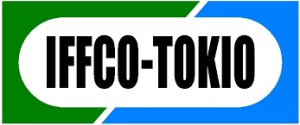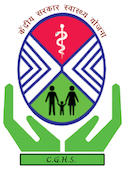The human skeletal system has many joints between bone to bone, bone to muscles, and muscles to muscles. Therefore, the joint can be defined as a point where more than one bone connects. The skeletal system also includes cartilage that helps in contact with two bones. The primary function of joints is to enable the movement and locomotion of the body. Apart from movement joints also help in maintaining the stability of the human body. There are mainly three types of bones in the human skeletal system; Fibrous joints, synovial joints, and cartilaginous joints. Joints can be classified on the amount of movement done and the type of tissues present in between bones.
Based on movement done joints can be categorized as follows:
- Fixed Joint or Synarthroses– This joint contains fibrous tissue that allows no movement in the joints. Skull joints are the best example of fixed joints.
- Slightly Movable Joint or Amphiarthroses– This joint contains cartilaginous tissue, which allows slight movement in the joints, more than fixed joints. Inter-vertebral discs joints are the best example of Movable joints.
- Freely Moveable Joint or Synovial Joints– This joint allows the maximum degree of movement in the bones. The synovial joints are further classified into below categories;
- Ball and socket joint- like shoulder joint & hip joint where one bone is round and large, and other is a cup-like socket
- Hinge joint- like elbow and knee joint that allows movement in one direction like a hinge
- Pivot joint- like the atlantooccipital joint in the neck for rotation in one axis
- Ellipsoid joint- like wrist joint which allows movement in two axes
- Saddle joint- like the carpometacarpal joint in the thumb similar to ellipsoid bone.
Based on tissues present to connect the two joints, they are divided into three categories;
- Fibrous joints that have fibrous tissue connecting two bones
- Cartilaginous joints that have cartilaginous tissue connecting two bones
- Synovial joints that have synovial fluid in the synovial cavity connecting two bones.
Diseases caused in Orthopedics System:
Ankylosing Spondylitis:
It can be identified as a type of arthritis that causes inflammation in joints. Majorly large and spine joints are affected in this. Pain and difficulty in movement of the back are common symptoms. It leads to improper hounded back posture. It can be treated by exercises, medication, physiotherapy, and surgeries in severe conditions.
Osteoarthritis:
Tissues at the end of joints wear down in osteoarthritis. These tissues are flexible and provide protection, and they are mainly present in the lower back, hip, and back. It can be treated by exercises, medication, physiotherapy, and surgeries in severe conditions.
Rheumatoid Arthritis:
In rheumatoid arthritis, joint tissues in the human skeletal system are attacked by the immune system. In some severe cases, the organs are also attacked. Swelling is caused in joints affecting the joints lining. Anti-rheumatoid medicines are used for their treatment. In severe cases, surgeries are also suggested.
Scoliosis:
There is a curvature in the spine in Scoliosis. It occurs at the time of puberty and has mild symptoms. In severe cases, it causes pain and discomfort. It can be treated by physiotherapy.
Ayurveda about Orthopedic diseases?
According to Ayurveda, problems in the human skeleton system related to joints are classified into two main categories; the first category includes the weakness of joints and their related issues due to poor nutrition and low bone density. Due to lack of proper nutrition, the bone degenerates; and results in immobilization of joints. The second category includes the accumulation of the toxins in joints, which leads to heavy and stiff joints. In Ayurveda, these toxins are termed as “Ama.”
The ama causes inflammation in joints, causing pain. Like Ama, Vyana Vata is also a kind of toxin which de-generates the bone day by day. In this situation, the lubrication of bones is not proper, resulting in decreased flexibility and increased discomfort. Various pain, discomfort, and illness in joints are treated by herbs, oils, and therapies, which help in permanent treatment.
How Ayurveda can better help with diseases of bones?
According to Ayurveda, inflammation is caused because of toxins that are dealt with by detoxification. Detoxification in Ayurveda is done by light food and warm fluid with rest for low toxicity. If the toxicity is high, panchakarma treatments and herbs are useful in Ayurveda terms. Herbs like Guggulu are helpful for inflammation in joints. Therapies like Dhanyamladhara, Abhyanga, and Vasthis are used for treating joints, pain, and inflammation.
Degenerative skeleton- muscular conditions are also addressed by Ayurveda.
To treat Degenerative conditions, Ayurveda uses herbal medicines with proper care of food and exercise. The drugs used in Ayurveda not only reduce the degeneration process but also strengthen the bones and joints. Therapies for joint diseases include; pouring medicated oils, massage by bolus, filling oil in dough well. Pirant tablets and oils are used to provide relief from pain and discomfort. Stiffness in joints is also treated by such oils.
Limitations of western medicines in treating the system
Drugs used for treating joint-diseases contain bisphosphonates that can cause fractures of femur & jaw osteonecrosis. The remedy of the west includes corticosteroids that result in severe infections from bacteria, viruses, or fungi and increase the risk for patients with diabetes & lung diseases.
Side-effects like Cough, Dizziness, Headache, Infusion reaction& bruising are widespread for western medication. Some long term and severe side effects include Cataracts, Increased cholesterol, Atherosclerosis, High blood pressure, increased appetite or indigestion, Mood swings or nervousness, and Muscle weakness.
Ayurveda always acts on the root cause and believes in treating and eliminating it. But western medicines only treat the visible symptoms and not cure the root causes. As root cause is not removed permanently, the pain and discomfort are caused lifetime.













